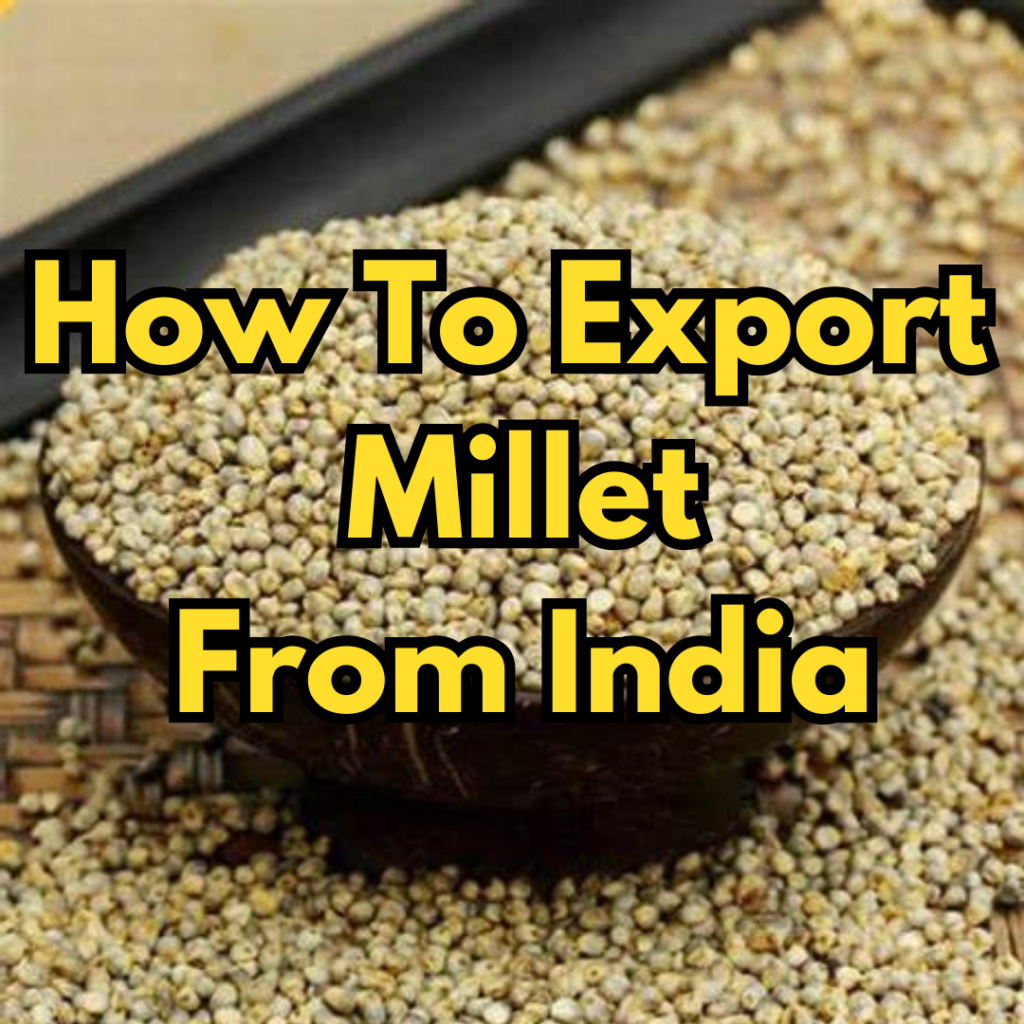Market Research and Planning:
Start by conducting market research to identify potential international markets for millet.
Analyze market demand, pricing trends, and competition.
Create a business plan outlining your export strategy, target markets, and financial projections.
Business Registration and Compliance:
Register your business as an exporter with relevant government authorities, such as the Directorate General of Foreign Trade (DGFT) in India.
Ensure compliance with export laws and regulations, including obtaining any required licenses and permits.
Quality Control and Certification:
Ensure the millet you intend to export meets international quality standards.
Obtain necessary certifications like the Food Safety and Standards Authority of India (FSSAI) license and any other relevant certifications required by the importing country.
Supplier Selection:
Establish relationships with millet suppliers or farmers who can consistently provide high-quality products.
Negotiate terms and agreements with suppliers regarding pricing, quality, and delivery schedules.
Packaging and Labeling:
Package millet in accordance with international standards and preferences. Good packaging can enhance product appeal and shelf life.
Ensure clear and accurate labeling, including product information, nutritional facts, and compliance with importing country’s labeling requirements.
Export Documentation:
Prepare the necessary export documents, which may include the bill of lading, certificate of origin, commercial invoice, packing list, and any specific documents required by the importing country.
Logistics and Transportation:
Arrange transportation for millet from your production or sourcing location to the export port.
Choose suitable transportation methods, whether by road, rail, or sea, depending on the destination.
Customs Clearance:
Work with customs brokers or agencies to ensure smooth customs clearance at both the Indian and importing country’s ports.
Be aware of any tariffs or import restrictions that may apply to millet in the destination country.
Market Entry and Distribution:
Establish partnerships with distributors, wholesalers, or retailers in the target market to ensure a smooth entry into that market.
Consider attending trade fairs and exhibitions to promote your millet products.
Payment and Finance:
Determine payment terms and methods with your buyers. Common options include letters of credit (LC), advance payment, or open account.
Explore financial assistance and export credit facilities offered by government agencies or financial institutions.
Quality Assurance and Customer Support:
Maintain consistent quality control to meet buyer expectations.
Provide excellent customer support to build long-term relationships with international buyers.
Market Expansion:
Continuously monitor market trends and adapt your export strategy accordingly.
Explore opportunities to expand into new markets or introduce millet-based products to cater to different consumer preferences.
Exporting millet from India can be a profitable venture, but it requires careful planning, adherence to regulations, and a commitment to maintaining product quality. Additionally, consider seeking guidance from export promotion agencies and trade associations that can provide valuable support and resources for Indian exporters.
millet #milletexport #howtoexportmilletfromindia #export #import #importexportbusiness



